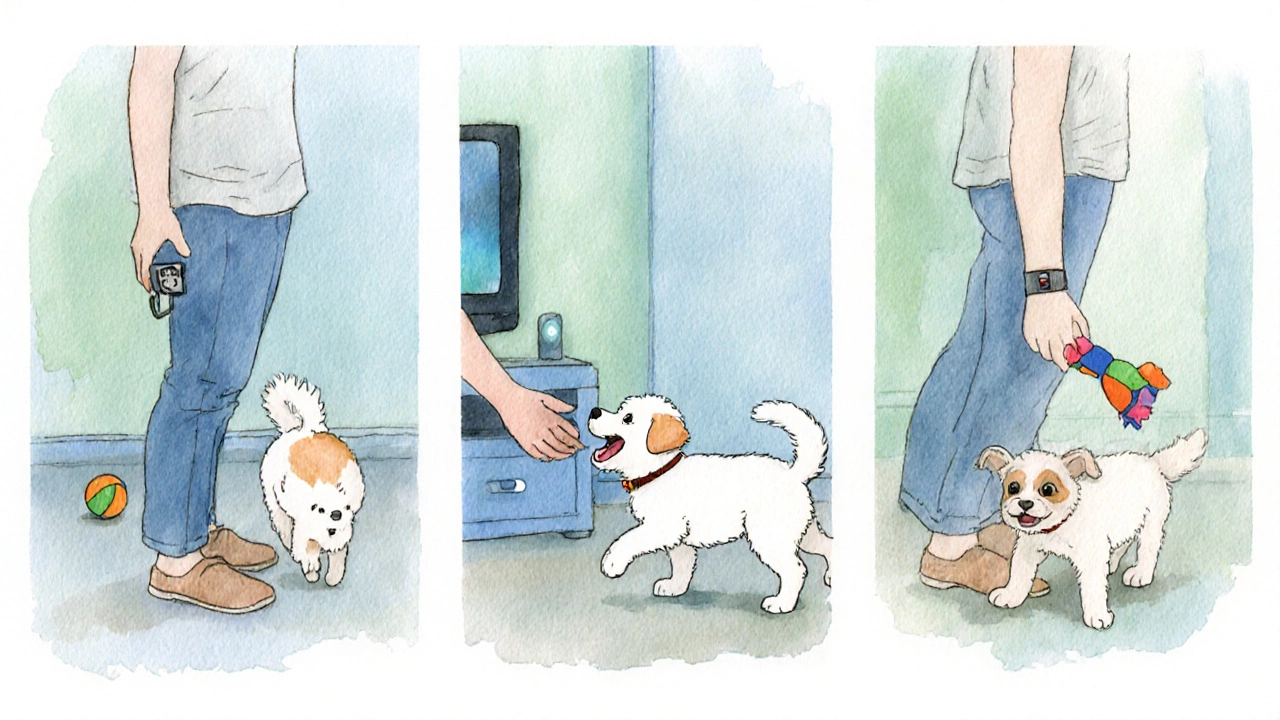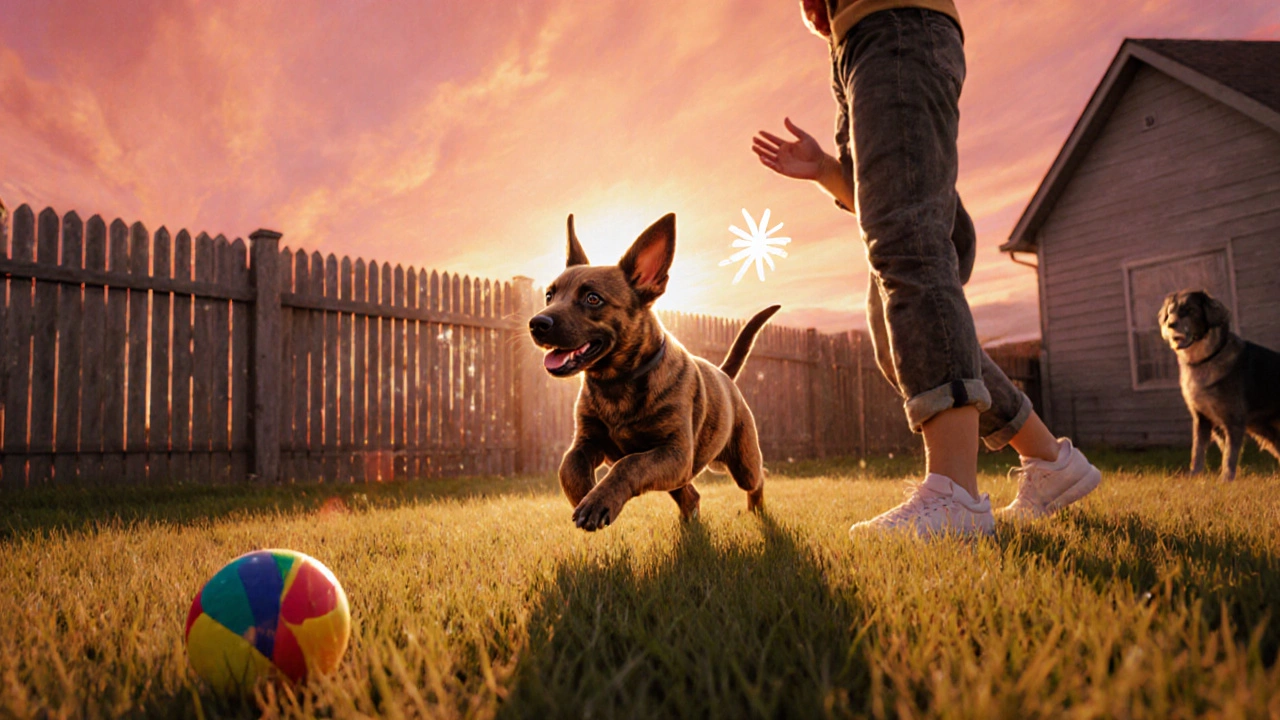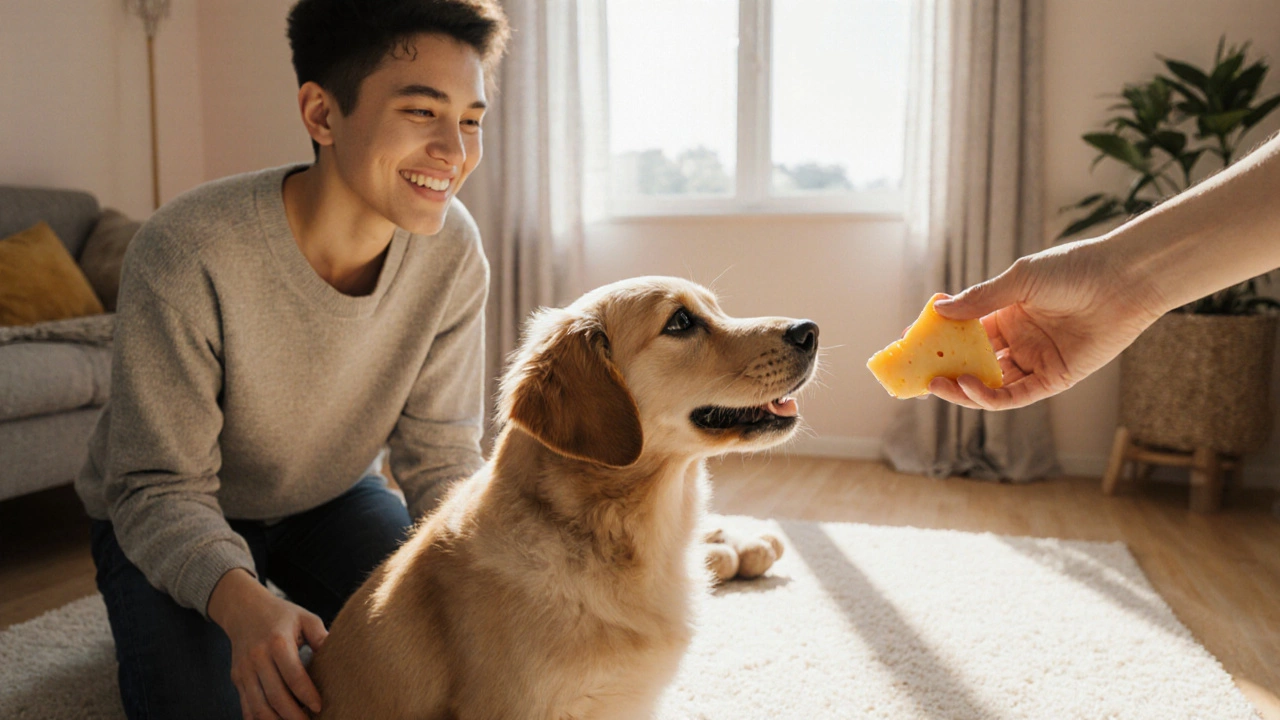Puppy Name Response Tracker
Name Response Progress Tracker
Getting a new puppy to respond to its name is one of the first milestones in a solid training foundation. It’s not just a cute trick - a reliable name response can keep your pup safe and make everyday life smoother. Below is a practical, step‑by‑step guide that works whether you’re in a quiet apartment or a bustling backyard.
Why a Name Matters
When you call a puppy by name, you’re asking for immediate attention amid distractions. This brief pause gives you a window to give commands, keep them from danger, or simply reinforce good behavior. Research from the University of Glasgow (2023) shows that dogs who reliably respond to their name are 30 % quicker to obey subsequent commands.
Getting Ready: Tools and Environment
Before the first session, gather a few essentials. Each acts as a reward (something the puppy finds highly motivating, such as a tasty treat, a squeaky toy, or praise). Using a consistent clicker (a small handheld device that makes a sharp click sound to mark the exact moment a behavior occurs) can also improve timing, though it’s optional.
- Low‑value treats (small pieces of soft kibble)
- High‑value treats (cheese, cooked chicken)
- Favorite toy (a plush squeaker or rope)
- Clicker (optional)
- Quiet, distraction‑free space for the first few rounds
Keep training sessions short - 3 to 5 minutes - and repeat several times a day. Puppies have short attention spans, and consistency beats length.
Step‑by‑Step: Teaching the Name
- Introduce the name: Say the puppy’s chosen name in a happy, upbeat tone. Immediately after, give a reward - whether a treat or a quick play with a favourite toy.
- Pause and watch: After a few repetitions, pause for a split second before offering the reward. This teaches the pup to associate the sound of the name with the upcoming treat.
- Increase distance: Gradually step back a few feet while still calling the name. Reward only when the puppy looks at you or comes toward you.
- Add mild distraction: Introduce a low‑level distraction (a toy on the floor, a faint TV noise). Call the name, and reward only if the pup responds correctly.
- Fade the reward: Once the puppy reliably responds in a quiet room, start mixing in verbal praise or a quick petting session instead of a treat every time. Keep treats occasional to maintain motivation.
Key tip: Use the same tone and volume each time. Inconsistent shouting or whispering can confuse the pup.

Common Pitfalls and How to Fix Them
If the puppy seems to ignore its name, consider these reasons:
- Too many distractions: Return to a quiet space and rebuild the association.
- Inconsistent reward timing: Use a clicker or hand signal to mark the exact moment your pup looks at you.
- Low‑value reward: Switch to a higher‑value treat for a few sessions until the response solidifies.
- Over‑calling: If you call the name too often without a reward, the pup will stop paying attention. Keep calls purposeful.
Choosing the Best Reward - Quick Comparison
| Reward | Effectiveness | Ease of Use | Shelf Life |
|---|---|---|---|
| High‑value Treat | Very High | Easy | Short (a few weeks) |
| Favorite Toy | High | Medium (needs timing) | Long (years) |
| Verbal Praise | Moderate | Very Easy | Infinite |
Pick the reward that your puppy reacts to most strongly at the start, then transition to lower‑value praise as the name becomes a habit.

Maintaining the Name Response
Even after your puppy reliably comes when called, practice regularly. A quick 30‑second “name check” before meals or walks keeps the behavior sharp. Mix in random intervals - not every time you see the pup - to prevent the response from becoming a reflex that only works for treats.
Frequently Asked Questions
How many repetitions does it take for a puppy to learn its name?
Most puppies start showing a clear response after 10‑15 consistent repetitions in a calm environment. The exact number varies with breed, age, and motivation level.
Can I use the same name for multiple dogs?
It’s possible, but not recommended. Dogs rely on distinct sound cues; similar names cause confusion, especially during emergencies.
Should I use a clicker when teaching the name?
A clicker can improve timing precision, especially for puppies that are easily distracted. If you don’t have a clicker, a sharp hand snap works similarly.
What if my puppy stops responding after a few weeks?
Re‑introduce short, high‑value reward sessions to refresh the association. Gradually fade the treats again once the response is stable.
Is there a recommended age to start name training?
Begin as soon as the puppy is comfortable with its new home, typically around 8‑10 weeks old. Younger pups have shorter attention spans, so keep sessions very brief.
Quick Recap
- Use a happy tone and immediate reward to create a strong name‑reward link.
- Start in a distraction‑free zone, then gradually add distance and mild distractions.
- Choose high‑value treats or a favorite toy for the first few sessions; fade to praise later.
- Practice consistently, keeping sessions under five minutes.
- Troubleshoot by simplifying the environment, improving reward timing, or raising reward value.
With patience and consistent positive reinforcement, your pup will turn its name into a reliable cue for safety and fun.
